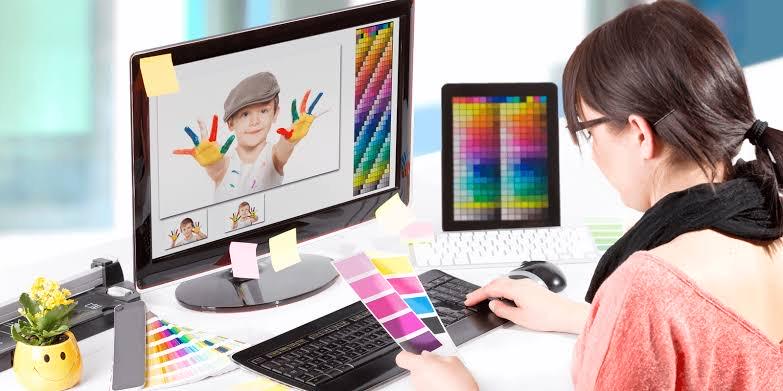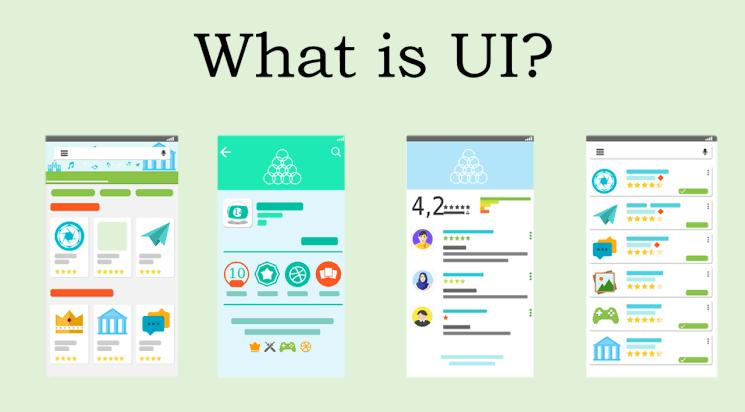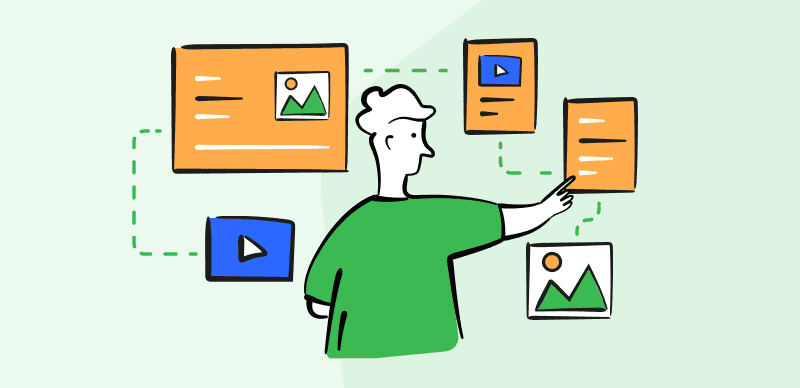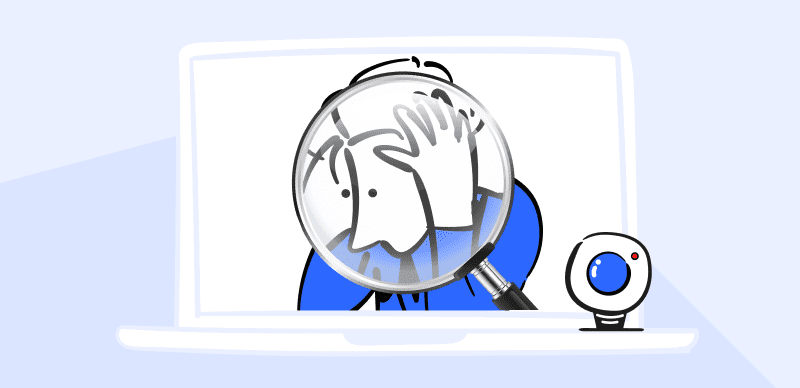Visual design and UI design are both concerned with visual branding and aesthetics. But the truth is they’re not the same things. While visual design is a discipline that focuses on creating aesthetically appealing designs for a product or digital asset, UI design focuses on both looks and how users interact with a digital product, that’s what UI design software aim for.
That said, if you’re looking to explore the digital design industry or start a career in design, it’s important you understand the differences between these two design disciplines, as it’ll help you understand what they are and what it feels like to work in each field.
In this post, we’ll share all you need to know about visual design vs. UI design, from what they are to their principles, similarities, and lots more.
Also read: How to Design a 3d Model for Printing? >
Table of Contents: hide
What Is the Work of a Visual Designer?
UI Design vs. Visual Design: A Comparison of the Key Distinctions
What Is Visual Design?

What Is Visual Design
Visual design, as mentioned earlier, is a discipline that focuses on creating aesthetically appealing designs for a product. It aims to improve a product’s look using suitable colors, space, layout, typography, and imagery, thus keeping users engaged while using the product.
Also, Visual design helps to communicate positive information about a product to users and ensure there’s 100% consistency in a product’s visuals, allowing it to be easily recognized.
Also Read: How to Export and Save Cricut Design as JPG >
Principles of Visual Design
Some of the important principles of design included the following;
Visual hierarchy
The principle of visual hierarchy in visual design is used to communicate the importance of various elements in a design. It’s usually implemented through variations in placement, spacing, color, and lots more.
With a good visual hierarchy, users will easily understand a design layout, making it easy for them to figure out where to look for specific elements on a page. One of the best ways to establish a good visual hierarchy in a design is to use bright colors for elements that are important and muted colors for the ones that are less important.
Gestalt
Established in the 20th century, the gestalt design principle explains how humans identify patterns, group matching elements, and streamline complex images. It is used by designers to organize elements of a design in a way that they’re visually pleasing and easy to navigate for users at all levels.
Contrast
The principle of contrast in design is usually used to differentiate various elements and areas in a design. It provides the differences between different elements such as colors, shapes, size, etc., to highlight their functions. For example, the delete option in most designs is usually indicated with red color while other colors signify other elements.
Balance
Balance is another important principle of visual design that you must know. It involves establishing a sense of connection between elements in a design, thus allowing users to understand the unity between the elements and making it easy for them to navigate and collaboration with the team works.
Just like having a balanced meal, good use of the balance principle in design ensures all elements in every area of a design are distributed evenly. This prevents a situation where only one area in a design catches users’ attention.
Scale
Scale is one of the principles in visual design that every designer must know. It refers to how small or large different elements appear in a design.
Designers use this principle to signify how important an element is in a design. They use it to communicate the importance of different elements, such that the bigger elements are the most important in a design.
The right use of the principle of scale in design allows users to easily analyze the visuals of a product and use it to their advantage.
What Is the Work of a Visual Designer?
A visual designer creates the layouts, artwork, and concepts for digital assets and projects based on creative brief writing. They create branding projects from the ground up and provide quality artwork and creative direction.
Visual designers provide businesses with visually appealing designs for their:
- Apps
- Websites
- Video games
- Movies
- TV shows, and more.
Many people who hold this position make design decisions about the individual elements that shape a brand’s identity. They include colors, icons, logos, typography, and others. Visual designers create prototypes and wireframes to convey designs in their various stages.
In addition, they design:
- Infographics
- Email marketing templates
- Product brochures
- Branded presentations
- Social media imagery and more.
To ensure visual design consistency, designers organize and maintain brand design systems and libraries. They also oversee the quality assurance of all visual assets. Additionally, they take part in ideation sessions where they optimize processes related to designs.
What Is UI Design?

What Is UI Design
UI design, also known as User Interface design, on the other hand, is all about how users interact with a product. It deals with the product’s usability, appearance, interactivity, and behavior, ensuring users find it easy to use regardless of their skill level.
UI design covers all visual and interactive elements that a user might encounter while using a product, from icons and buttons to color schemes, spacing, and lots more.
UI Design Principles
Some of the most important UI design principles include the following;
Familiarity
Building a familiar pathway is very important in design, and this is where the principle of familiarity comes into the game.
Familiarity in UI design focuses on how target users anticipate the interface of a website or product to be based on their experience with similar products or websites, thus creating a design like the ones the users have used.
For example, most web users expect the menu bar of any website to be at the top corner of the site. So, when creating a website, a designer
Designers use the principle of familiarity to anticipate the user’s difficulty and use that to eliminate confusion in their design.
Consistency
The principle of consistency in UI design deals with creating consistent visual elements throughout a product or website’s interface, from colors to headings, typography, and lots more. A designer can achieve this by ensuring all repeated elements on a website look the same and have the same functionality.
User Control
User control is a design principle that focuses on designing an interface that is less confusing and prompts users to perform certain actions. As we all know, people like to be in control of their actions. So, UI designers must always ensure the interface of a website is easy to use for users with any skill level.
Accessibility
Accessibility is another important principle for an effective UI design. Yes, it’s what makes users feel comfortable performing actions on a website. So, as a UI designer, you must learn to make your work accessible to everyone regardless of their condition or level of knowledge.
What Is the Work of a UI Designer?
UI design is a multi-faceted and challenging role that helps to make sure the user interface of a product is as intuitive as possible. UI designers take the wireframes created by UX designers and bring them to life with visual elements.
That includes designing all the different screens of a website or app. Basically, UI designers take care of elements such as layout, imagery, spacing, color, and typography. They also design and use UI elements such as icons and buttons.
Besides making the user interface more appealing, UI designers add interactivity to their designs. They do so by determining what happens when a user clicks on a button, icon, and more.
For example, what does the user see when they swipe right or left on someone’s profile on a dating app? Besides building visually appealing interfaces, UI designers take part in the research. They do so to understand end-user goals. They also conduct competitor research to inform their own UI designs.
After building all the interfaces, UI designers hand over the designs to developers. They, in turn, add the code to improve the app’s or site’s functionality.
With your new app or website complete, you’ll have to carry out various tests. For example, testers will have to manually browse the site or app on a variety of devices. This will help identify everything from broken links to user experience issues. The idea of testing is to identify the issues and make sure the site works according to the user’s needs and preferences.
If everything works as it should, the next step is to deploy the website or app.
UI Design vs. Visual Design: Different Salary
In the US, the average salary of a visual designer is $66,000 while that of a UI designer is $85,000 per year. That means the salary of a UI designer is more than that of a visual designer in the US.
In California, the salary range of a visual designer is $60,000 to $65,000, while that of a UI designer is $51,000 to $90,000. The salaries of UI designers in New York range from $44,000 to $200,000 with a median salary of $93,500 while that of visual designers ranges between $60,000 to $80,000.
From the data above, it’s clear that UI designers earn more than visual designers across the US. However, in some companies, these roles are interchangeable and you may find cases where a visual designer doubles as a UI designer and vice versa.
UI Design vs. Visual Design: A Comparison of the Key Distinctions
- Visual design is a broad discipline that includes the design of all brand and product materials. UI design is a much narrower discipline that relates to product design and interface.
- Visual design focuses on brand identity, while UI design focuses on functionality and appearance.
- Visual design is closely related to graphic design, while UI design is closely related to UX design.
What Connections Exist Between UI and Visual Design?
Visual design and UI design are collaborative disciplines that require designers to work in teams. They are both creative and visual disciplines that incorporate the use of design elements. Such elements include colors, imagery, layout, spacing, and typography. To achieve their objectives, visual and UI designers use the same tools – Adobe XD, Illustrator, InDesign, Figma, and Photoshop.
Final Thoughts
Visual design and UI design are multi-faceted disciplines, but visual design is broader than UI design. It can include the visual design of products such as websites and apps. This also extends to infographics, social media campaign visuals, and email newsletter templates.
On the other hand, UI design relates to the design of product interfaces, specifically their functionality, and looks. However, both are excellent careers to pursue and in some companies, you’ll find these roles interchangeable.
Overall, the goal of visual and UI designers is to ensure the end products provide a seamless user experience and meet the user’s needs.



